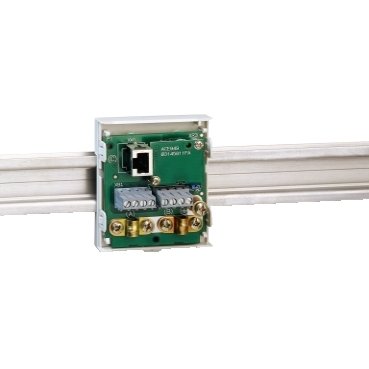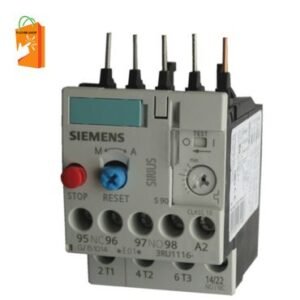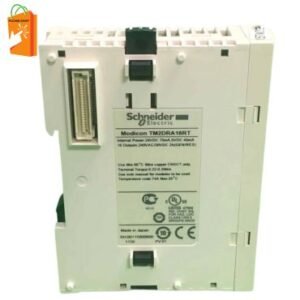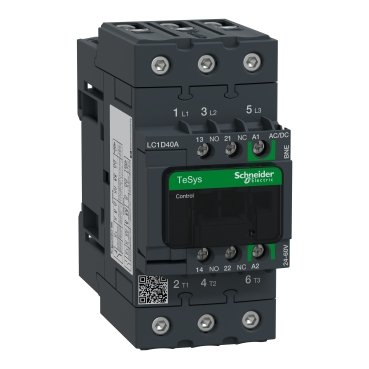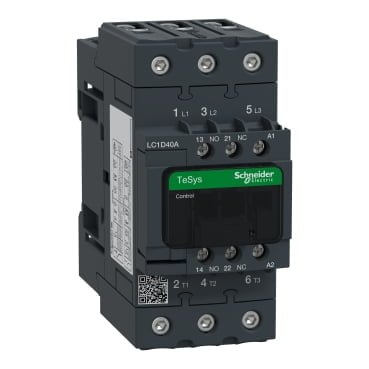Description
| range of product | Sepam series 20. Sepam series 40. Sepam series 48. Sepam series 80 NPP. Sepam series 80. Sepam series 60. |
|---|---|
| device short name | ACE959. |
| communication port protocol | Modbus RTU network: E-LAN interface: RS485 – 4-wire. Modbus RTU network: S-LAN interface: RS485 – 4-wire. |
|---|---|
| local signalling | LED for link activity (front face). |
| [Us] rated supply voltage | 12 V DC tolerance: +/- 10 %. 24 V DC tolerance: +/- 10 %. |
| maximum supply current | 16 mA: receiving mode. 40 mA: maximum in sending mode. |
| mounting mode | Fixed. |
| mounting support | Symmetrical DIN rail. |
| Height | 88 mm. |
| width | 144 mm. |
| Depth | 30 mm. |
| Net weight | 0.2 kg. |
| mechanical robustness | Earthquakes in operation (level: 2) : 1 Gn (vertical axes) conforming to IEC 60255-21-3. Earthquakes in operation (level: 2) : 2 Gn (horizontal axes) conforming to IEC 60255-21-3. Jolts de-energized (level: 2) : 20 Gn/16 ms conforming to IEC 60255-21-2. Shocks de-energized (level: 2) : 27 Gn/11 ms conforming to IEC 60255-21-2. Shocks in operation (level: 2) : 10 Gn/11 ms conforming to IEC 60255-21-2. Vibrations de-energized (level: 2) : 2 Gn, 10 Hz…150 Hz conforming to IEC 60255-21-1. Vibrations in operation (level: 2) : 1 Gn, 10 Hz…150 Hz conforming to IEC 60255-21-1. Vibrations in operation (level: Fc) : 2 Hz…13.2 Hz, a = +/- 1 mm conforming to IEC 60068-2-6. |
| maximum cable distance between devices | 10 Devices <180 m at 12 V DC. 10 Devices <750 m at 24 V DC. 20 Devices <160 m at 12 V DC. 20 Devices <450 m at 24 V DC. 25 Devices <125 m at 12 V DC. 25 Devices <375 m at 24 V DC. 5 Devices <1000 m at 24 V DC. 5 Devices <320 m at 12 V DC. |
| auxiliary connection terminal | Earthing terminal: screw-type connectorcable 2.5…50 mm² <0.2 m. Earthing terminal: screw-type connectortinned copper braid 6…100 mm². |
| tightening torque | Earthing terminal: 2.2 N.m. |
| electromagnetic compatibility | 1 MHz damped oscillating wave: (immunity tests-conducted disturbances), 2.5 kV CM, 1 kV DM, conforming to IEC 60255-22-1. 1 MHz damped oscillating wave: (immunity tests-conducted disturbances), 2.5 kV CM, 2.5 kV DM, conforming to ANSI C37.90.1. 100 kHz damped oscillating wave: (immunity tests-conducted disturbances), 2.5 kV CM, 1 kV DM, conforming to IEC 61000-4-12. Conducted disturbance emission: (emission tests), conforming to IEC 60255-25. Conducted disturbance emission: (emission tests), A, conforming to EN 55022. Disturbing field emission: (emission tests), conforming to IEC 60255-25. Disturbing field emission: (emission tests), A, conforming to EN 55022. Electrostatic discharge: (immunity tests-radiated disturbances), 8 kV air, 4 kV contact, conforming to ANSI C37.90.3. Electrostatic discharge: (immunity tests-radiated disturbances), 8 kV air, 6 kV contact, conforming to IEC 60255-22-2. Fast transient bursts: (immunity tests-conducted. disturbances), 4kV, 2.5 kHz, conforming to ANSI C37.90.1 Fast transient bursts: (immunity tests-conducted. disturbances), A and B, 4kV, 2.5 kHz/2 kV, 5 kHz, conforming to IEC 60255-22-4. Fast transient bursts: (immunity tests-conducted disturbances), IV, 4kV, 2.5 kHz, conforming to IEC 61000-4-4. Immunity to conducted RF disturbances: (immunity tests-conducted disturbances), III, 10 V, conforming to IEC 60255-22-6. Immunity to magnetic fields at network frequency: (immunity tests-radiated disturbances), IV, 30 A/m. (continuous)-300 A/m (1-3 s), conforming to IEC 61000-4-8 Immunity to radiated fields: (immunity tests-radiated disturbances), 10 V/m, 80 MHz…1 GHz, conforming to IEC 60255-22-3. Immunity to radiated fields: (immunity tests-radiated disturbances), 35 V/m, 25 MHz…1 GHz, conforming to ANSI C37.90.2. Immunity to radiated fields: (immunity tests-radiated disturbances), III, 10 V/m, 80 MHz…2 GHz, conforming to IEC 61000-4-3. Surges: (immunity tests-conducted disturbances), III, 2 kV CM, 1 kV DM, conforming to IEC 61000-4-5. Voltage interruptions: (immunity tests-conducted disturbances), 100 % during 100 ms, conforming to IEC 60255-11. |
|---|---|
| climatic withstand | Influence of corrosion/gaz test 2 (in operation) : 21 days, 75 % RH, 25 °C, 0.5 ppm H2S, 1 ppm S02 conforming to IEC 60068-2-60. Influence of corrosion/gaz test 4 (in operation) : 21 days, 75 % RH, 25 °C, 0.01 ppm H2S, 0.2 ppm S02, 0.2 ppm NO2, 0.01 ppm CI2 conforming to IEC 60068-2-60. Continuous exposure to damp heat (in operation) : Cab: 10. days, 93 % RH, 40 °C conforming to IEC 60068-2-78. Continuous exposure to damp heat (in storage) : Cab: 56. days, 93 % RH, 40 °C conforming to IEC 60068-2-78. Continuous exposure to damp heat (in storage) : Db: 6. days, 95 % RH, 55 °C conforming to IEC 60068-2-30. Exposure to cold (in operation) : Ad: – 25 °C conforming to IEC 60068-2-1. Exposure to cold (in storage) : Ab: – 25 °C conforming to IEC 60068-2-1. Exposure to dry heat (in operation) : Bd: 70 °C conforming to IEC 60068-2-2. Exposure to dry heat (in storage) : Bb: 70 °C conforming to IEC 60068-2-2. Salt mist (in operation) : Kb/2: 6 days conforming to IEC 60068-2-52. Temperature variation with specified variation rate (in storage) : Nb: – 25 °C to 70 °C, 5 °C/min conforming to IEC 60068-2-14. |
| Ambient air temperature for operation | -25…70 °C. |
| Unit Type of Package 1 | PCE. |
|---|---|
| Number of Units in Package 1 | 1 |
| Package 1 Height | 6.5 cm. |
| Package 1 Width | 12.5 cm. |
| Package 1 Length | 18.3 cm. |
| Package 1 Weight | 207.0 g. |
| Unit Type of Package 2 | S02. |
| Number of Units in Package 2 | 8 |
| Package 2 Height | 15.0 cm. |
| Package 2 Width | 30.0 cm. |
| Package 2 Length | 40.0 cm. |
| Package 2 Weight | 1.91 kg. |
The 59643 RS485 interface with 4 wires, also known as ACE959, is a specialized communication accessory designed for the Sepam 20, 40, and 60 series protection relays from Schneider Electric. This interface enables robust and reliable communication between the Sepam protection relays and various supervisory control and data acquisition (SCADA) systems, providing essential data for monitoring and controlling electrical power systems.
Overview of Sepam Protection Relays
Sepam protection relays are integral to power system protection and management, offering advanced protection, measurement, and monitoring functions for electrical installations. The Sepam series is divided into different models, such as Sepam 20, 40, and 60, each tailored for specific applications ranging from simple overcurrent protection to comprehensive protection schemes for complex power systems.
Key Features of the 59643 RS485 Interface
The 59643 RS485 interface, or ACE959, is designed to enhance the communication capabilities of Sepam protection relays. Key features include:
- RS485 Communication Standard: Utilizes the RS485 standard, known for its reliable and high-speed communication over long distances, making it suitable for industrial environments.
- 4-Wire Configuration: Employs a 4-wire setup, providing full-duplex communication, which allows simultaneous two-way data transmission for faster and more efficient communication.
- Isolation and Protection: Offers electrical isolation between the Sepam relay and the communication network, protecting the system from voltage spikes and electromagnetic interference.
- Easy Integration: Seamlessly integrates with Sepam 20, 40, and 60 series relays, enhancing their communication capabilities without requiring extensive modifications.
Technical Specifications
- Communication Protocol: Supports Modbus RTU, a widely used protocol in industrial automation for reliable data exchange.
- Baud Rate: Configurable baud rates to match the communication requirements of the connected SCADA system.
- Cable Length: Supports long-distance communication up to 1200 meters, ensuring flexibility in system design and layout.
- Connectors: Equipped with standard connectors for easy and secure attachment to Sepam relays and communication networks.
Applications of the 59643 RS485 Interface
The 59643 RS485 interface is crucial in various applications where reliable communication and data exchange are paramount. Key applications include:
- Power System Protection: Enhances the capabilities of Sepam protection relays by enabling them to communicate critical data to SCADA systems for real-time monitoring and control.
- Energy Management Systems: Facilitates the integration of Sepam relays into energy management systems, helping to optimize energy usage and improve operational efficiency.
- Industrial Automation: Used in industrial automation setups to provide reliable communication between Sepam relays and other control devices, ensuring seamless operation and coordination.
- Remote Monitoring: Enables remote monitoring and diagnostics of electrical systems, reducing the need for on-site inspections and improving response times to faults and abnormalities.
Integration with Sepam Relays
The 59643 RS485 interface is specifically designed to work with Sepam 20, 40, and 60 series relays. Its integration process includes:
- Physical Connection: Connecting the interface to the Sepam relay and the communication network using standard connectors.
- Configuration: Setting up the communication parameters, such as baud rate and Modbus address, to match the requirements of the SCADA system.
- Testing: Verifying the communication link by sending and receiving data between the Sepam relay and the SCADA system.
Benefits of Using the 59643 RS485 Interface
- Improved Communication: Provides reliable and high-speed data transmission, enhancing the overall performance of the protection and monitoring system.
- Enhanced Data Accuracy: Ensures accurate and timely data exchange, crucial for effective monitoring and control of electrical systems.
- Increased System Reliability: Offers electrical isolation, protecting the system from voltage spikes and electromagnetic interference, thereby improving reliability.
- Cost-Effective Solution: Reduces the need for additional communication infrastructure, making it a cost-effective solution for enhancing existing protection systems.
Installation and Maintenance
Installing the 59643 RS485 interface is straightforward, involving the following steps:
- Mounting: Securely mount the interface near the Sepam relay using the provided mounting accessories.
- Wiring: Connect the interface to the Sepam relay and the RS485 communication network using the appropriate cables.
- Configuration: Configure the communication settings to ensure compatibility with the connected SCADA system.
- Testing and Commissioning: Perform tests to verify the communication link and ensure proper data exchange.
Maintenance of the 59643 RS485 interface is minimal, primarily involving periodic inspections to ensure secure connections and firmware updates to maintain optimal performance.
Conclusion
The 59643 RS485 interface, or ACE959, is a vital accessory for enhancing the communication capabilities of Sepam 20, 40, and 60 series protection relays. By providing reliable and high-speed communication over long distances, it enables effective monitoring and control of electrical power systems. Its robust design, easy integration, and compatibility with industrial communication standards make it an essential component for modern power system protection and management.

